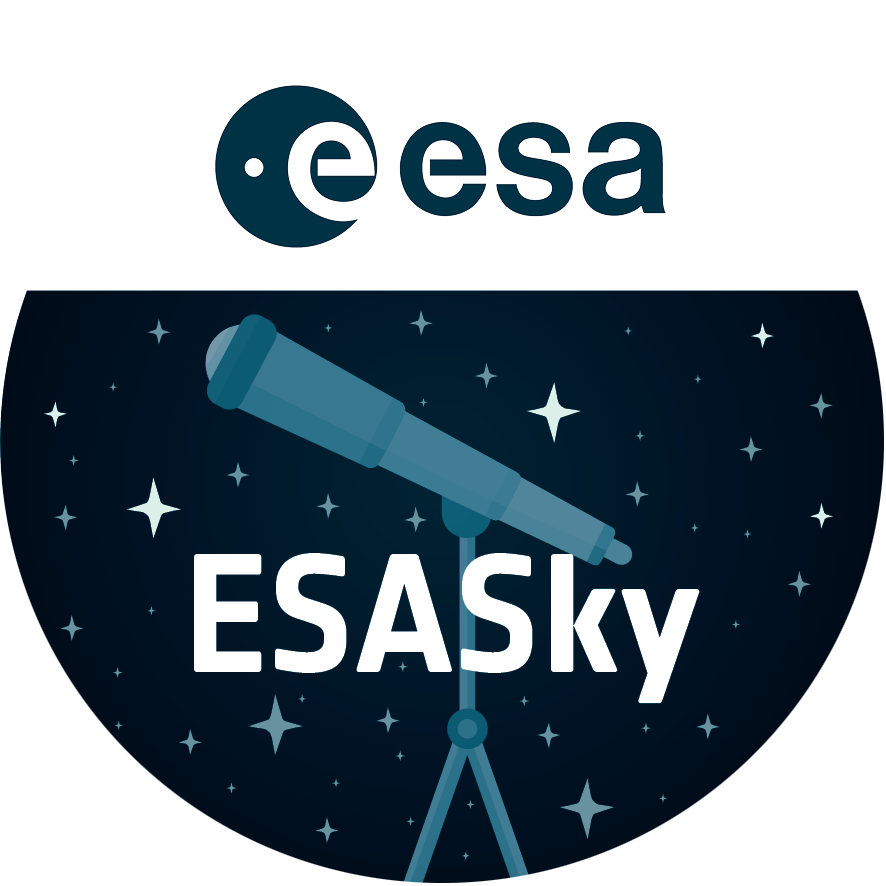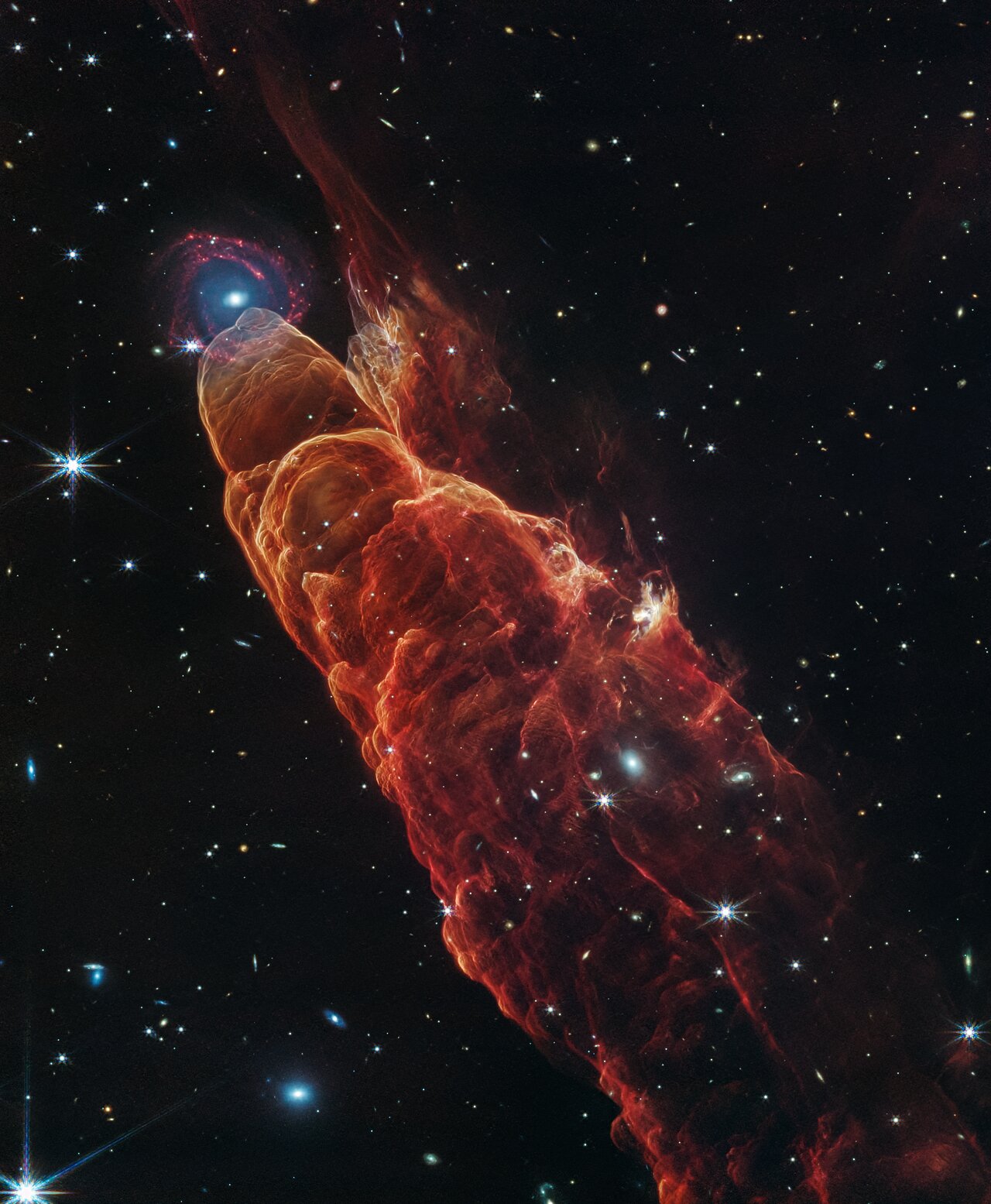Coordinates
| Position (RA): | 11 5 57.50 |
|---|---|
| Position (Dec): | -77° 33' 2.27" |
| Field of view: | 2.15 x 2.62 arcminutes |
| Orientation: | North is 152.6° right of vertical |
Colours & filters
| Band | Wavelength | Telescope |
|---|---|---|
| Infrared | 2.0 μm | James Webb Space Telescope NIRCam |
|
Infrared
PAH | 3.35 μm | James Webb Space Telescope NIRCam |
| Infrared | 4.44 μm | James Webb Space Telescope NIRCam |
|
Infrared
molecular hydrogen | 4.7 μm | James Webb Space Telescope NIRCam |
|
Infrared
PAH | 7.7 μm | James Webb Space Telescope MIRI |
Herbig-Haro 49/50 (NIRCam and MIRI Image)
The NASA/ESA/CSA James Webb Space Telescope observed Herbig-Haro 49/50, an outflow from a nearby still-forming star, in high-resolution near- and mid-infrared light with the NIRCam and MIRI instruments. The intricate features of the outflow, represented in reddish-orange color, provide detailed clues about how young stars form and how their jet activity affects the environment around them. A chance alignment in this direction of the sky provides a beautiful juxtaposition of this nearby Herbig-Haro object (located within our Milky Way) with a more distant, face-on spiral galaxy in the background.
Protostars are young stars in the process of formation that generally launch narrow jets of material. These jets move through the surrounding environment, in some cases extending to large distances away from the protostar.
Like the water wake generated by a speeding boat, the arcs in this image are created by the fast-moving jet slamming into surrounding dust and gas. This ambient material is compressed and heats up, then cools by emitting light at visible and infrared wavelengths. In particular, the infrared light captured here by Webb highlights molecular hydrogen and carbon monoxide.
The galaxy that appears by happenstance at the tip of Herbig-Haro 49/50 is a much more distant spiral galaxy. It has a prominent central bulge represented in blue that shows the location of older stars. It also displays hints of “side lobes,” suggesting that this could be a barred-spiral galaxy. Reddish clumps within the spiral arms show the locations of warm dust and groups of forming stars.
In the image background there are many more galaxies at further distances, including galaxies that shine through the diffuse infrared glow of the nearby Herbig-Haro object.
[Image description: Angled from the upper left corner to the lower right corner of the image is a conical shaped orange-red cloud known at Herbig-Haro 49/50. This feature takes up about three-fourths of the length of this angle. The upper left end of this feature has a translucent, rounded end. At this same location there is a background spiral shaped galaxy with a concentrated blue center that fades outwards to blend in with red spiral arms. The conical feature widens slightly from the rounded end at the upper right down to the lower right. The black background of space is clearer, speckled with some white stars and smaller, more numerous, fainter white galaxies.]
Credit:NASA, ESA, CSA, STScI
About the Image
| Id: | weic2506a | |
|---|---|---|
| Type: | Observation | |
| Release date: | 24 March 2025, 15:00 | |
| Related releases: | weic2506 | |
| Size: | 4152 x 5044 px | |




